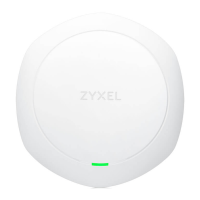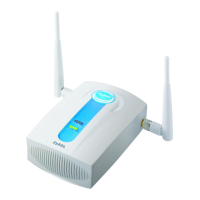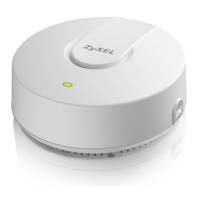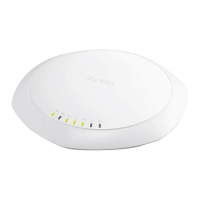Chapter 10 Wireless
NWA50AX User’s Guide
80
Ro g ue APs
A rogue AP is a wireless access point operating in a network’s coverage area that is not under the
control of the network administrator, and which can potentially open up holes in a network’s security.
In the following example, a corporate network’s security is compromised by a rogue AP (RG ) set up by
an employee at his workstation in order to allow him to connect his notebook computer wirelessly (A).
The company’s legitimate wireless network (the dashed ellipse B) is well-secured, but the rogue AP uses
inferior security that is easily broken by an attacker (X) running readily available encryption-cracking
software. In this example, the attacker now has access to the company network, including sensitive
data stored on the file server (C).
Fig ure 45 Rogue AP Example
Frie ndly APs
If you have more than one AP in your wireless network, you should also configure a list of “friendly” APs.
Friendly APs are wireless access points that you know are not a threat. It is recommended that you
export (save) your list of friendly APs often, especially if you have a network with a large number of
access points. Exported lists show MAC addresses in txt file format separated by line breaks.
Ro g ue AP De te c tion
This feature allows the Zyxel Device to monitor the WiFi signals for other wireless APs (see also
Section
1.2.3 on page 14
). Detected APs will appear in the Mo nitor > Wire le ss > De te c te d De vic e screen, where
the Zyxel Device will label APs with the criteria you select in Suspe c te d Ro g ue AP Cla ssific a tio n Rule as a
suspected rogue. The APs which you mark as either rogue or friendly APs in the Mo nitor > Wire le ss >
De te c te d De vic e screen will appear in the Wire le ss > Ro g ue AP screen. See
Section 1.4 on page 18 to

